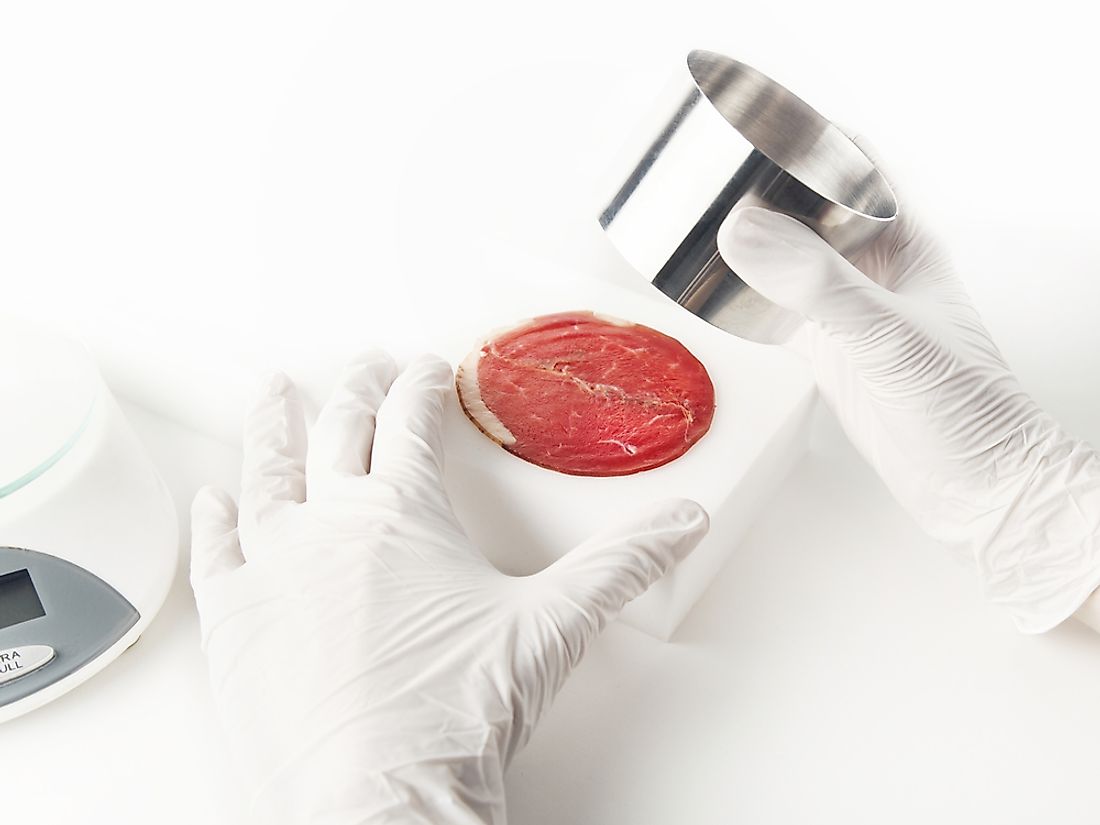What is In Vitro Meat?

In Vitro meat, also referred to as cultured meat, is grown in in a cell culture instead of acquired from an animal. Cultured meat is produced through tissue engineering and cellular agriculture. Dr. Mark Post of Maastricht University created the first beef burger patty from cultured meat, which was eaten at a demonstration in London, in August 2013. In Vitro meat has not gained popularity because of the technical challenges and cost of producing it. Furthermore, it is uncertain whether people will consider cultured meat as a normal meat from animals or as a strange type of food. The viability of the meat is still questionable and is under constant studies and research.
Processing In Vitro Meat
The starter cells for producing cultured meat are drawn painlessly from live animals of choice like chicken or cows. The cells are then put into culture media whereby they propagate and multiply independently from the animal. The process through which the starter cells are drawn from animals is known as biopsy. Stem cells are the ideal cells used because they are not specialized in specific body parts. Furthermore, stem cells have a capability of multiplying rapidly. Alternatively, muscle cells or myoblast cells could be used instead of stem cells. The propagation process is made efficient by exposing the cells to some chemicals.
After the cells are put in a medium culture, they are treated by applying a protein that quickens the propagation process. They are then put in a bioreactor to ensure the energy requirements of the cells are met. The cells are then grown on a scaffold. The scaffold should be preferably edible so that it does not have to be removed. The scaffold stimulates the stretching of the developing muscles.
Once the process starts, additional nutrients such as amino acids and vitamins might be injected into the tissue culture. New starter cells can also be added. In a period of two months, the research has proved that ten starter cells are capable to multiply to 50,000 tons of in vitro meat.
Preservatives are required to prevent the growing meat from rotting and to also protect it from yeast and fungi. Some of the common preservatives used include collagen powder, xanthenes gum, mannitol, and cochineal. These preservatives are used in different stages of growth and they tend to be components of end products.
Pros and Cons of In Vitro Meat
In vitro meat has caused varied reactions from people who have consumed it. It has received applause from people who are against animal cruelty through slaughtering and some environmentalists. Animal waste produces methane which increases amounts of methane released in the atmosphere leading to global warming. Therefore, production of meat without excreting animal waste goes a long way in protecting the environment. Production of in vitro meat can be capable of sustaining the demand for meat because of the quick multiplication. With cultured meat, there are no waste products like bones and other internal organs.
However, most people who have consumed in vitro meat have confessed that the meat tastes bad. Besides the bad taste, consumers have refrained from it because it is unnatural and has a lot of chemicals which may alter the normal functioning of body organs.











